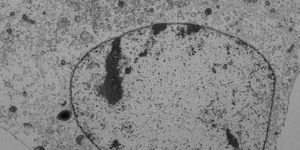In a swamp approximately 6 miles away from the Newcastle airport in New South Wales, Australia, scientists have discovered a new species of frog that is only slightly bigger than a human fingertip. The researchers have named the new frog species Mahony’s Toadlet (Uperoleia mahonyi) after Michael Mahony, Clulow’s mentor and a professor at the University of Newcastle, in recognition for “his contributions to the study of Australian amphibians,” the authors write in Zootaxa. However, Mahony’s Toadlet is not a toad, researchers say, but a native Australian frog that gets its name from the glands on its back and its rough, bumpy skin, which makes it look like a toad.
That’s not the only unique physicality it has. “It’s got this bright orange rust colour in its groin. They remain hidden when it’s sitting in its normal pose so it’s very well camouflaged,” said study lead author Simon Clulow. “But when it jumps you get a bright flash of colour from its groin and that startles the predator.”
The new frog species is secretive and lives a cryptic life, remaining well camouflaged and hidden under grass, leaves or sand. Spotting these frogs in the wild is not easy, explains the study. The tiny amphibians can be found only by following the male’s mating calls, and they have a restricted distribution, occurring in few coastal sand swamps in the Myall Lakes, Port Stephens and Central Coast, the researchers write. Based on the frog’s current known distribution, the Mahony’s Toadlet is probably at the risk of extinction due to threats like coastal development and should be assessed for an Endangered or Critically Endangered status under the IUCN red list, they add.
“The frog is a habitat specialist, living exclusively on a particular type of leached white sand substrate, which could make it more at risk from threats such as habitat loss and sand mining,” Clulow said. “Coastal areas such as those inhabited by this new species are also highly attractive residential development locations. Sadly, this threat, combined with the limited distribution of the frog could result in it being immediately listed as a threatened species.”
Nevertheless, finding the new species in the nick of time is a chance of luck on its own. “Nowadays many new discoveries are based primarily on genetics, that is the frogs look similar to other known species but when we analyze them in the lab we find they differ genetically. It’s almost unheard of to pick up a vertebrate in the field and know instantly, based on appearance alone, that it is a new species. The distinctive marble pattern on the frog’s belly, along with other features makes it quite different to any other frog species in this part of the world and led us to believe straight away that we had found a new species – it was an incredible moment,” Clulow, a biologist at the University of Newcastle, said in a statement.
Sources:
Mongabay News,
Australia Geographic,
NEWS AU, Zootaxa









